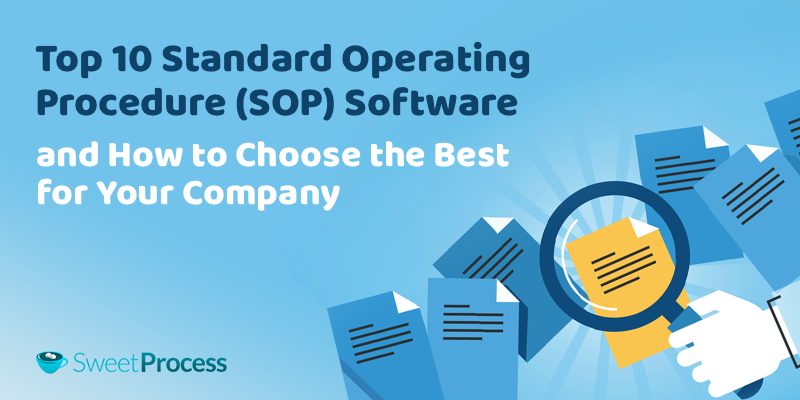
Are you using Xero for your business accounting the right way? Here are some common Xero mistakes for you to avoid.
Episode 86 is a solo episode with Meryl Johnston, Chief Executive Officer and Founder of Bean Ninjas, where she talks about 9 common Xero mistakes in the areas of Xero set up, admin, and reconciling transactions. If you are a Xero user or looking to use Xero for your business, you’ll get so much value from the information Meryl shares in this episode.
[00:54] The reason why you need to set up Xero the right way from the start.
[01:48] Mistake #1: Missing transactions in Xero.
[03:03] Mistake #2: Not managing receipts correctly or diligently.
[03:49] Features of Hubdoc, a free receipt management app that comes with every Xero Subscription.
[05:30] Mistake #3: Underutilizing the customization of your standard chart of accounts.
[07:30] Mistake #4: Not owning your Xero subscription.
[08:50] Mistake #5: Providing broad user access.
[10:18] Mistake #6: Not maintaining finance standard operating procedures.
[12:06] Mistake #7: Not reconciling bank account in Xero to bank statements.
[14:09] Mistake #8: Being confused on accrual accounting and bank rules.
[17:52] Mistake #9: Using personal cards for business transactions.
Transcription
Announcer Welcome to the Bean Ninjas Podcast, where you get an all-access pass to see what happens behind the closed doors of a fast-growing global bookkeeping and financial reporting business.
Meryl Johnston:
In this podcast episode, we’re going to be talking about common Xero mistakes. This is a solo episode and I’m going to be talking through three main areas; common mistakes I see related to getting Xero set up, common mistakes that relate to the administrative side of Xero, and then common mistakes when it comes to reconciling transactions.
Common Xero Mistake #1: Missing transactions in Xero
So let’s dive in and we’re first going to talk about setting Xero up. Something that I see here is that it’s not uncommon for not all of the business bank accounts you connect into Xero. And ideally, Stripe; if you’ve got a business Stripe, PayPal account or a credit card, all of that will be connected into Xero.
And what happens if isn’t the case is you’ll get halfway through the financial year or maybe, you’ll get to the end of the financial year and you’re going to send a report and you think, “These numbers just don’t look right.” And the reason that they might not look right is because you’re missing a whole bunch of transactions from a bank account that has been missed and hasn’t been added to Xero.
So there’s a couple of things you can do to help avoid this.
Number one is to do a little work of putting your business bank accounts when you’re setting Xero up. In that way, you can cross-check into your connection that every business account has been added and make sure that you are adding PayPal. And if you have; if you’re selling in different PayPal currencies, make sure that you have a separate PayPal account for each currency set up in Xero.
And then the second thing that helps with this is having a really clear separation between business bank accounts and personal bank accounts and the business accounts that you want to have captured in Xero and have those bank feeds activated.
If you’re banking with banks that don’t have bank feeds with Xero or there’s problems with the bank feed, and if you want to stick with Xero, then I would consider your bank you’re working with. Most of the banks don’t have any problems, but it really does cause a lot of headaches down the track if your bank feeds does have errors or have problems and I’m going to talk more about that in the reconciling section.
Common Xero Mistake #2: Not managing receipts correctly or diligently
So the second item in the Xero setup area is not deciding at the beginning how you’re going to manage receipts. And so the problem with this is that throughout the year when you receive a receipt or invoice, you already have a clear process on how you are managing, right?
And so, just to the end of the financial year when you’re forced to take [Inaudible 00:03:23] and then there’s a mass cleanup of receipts and filing, and at that stage, you’re probably hoping that you’re not missing any of your receipts or have been lost during the year.
Instead of having it that way, I recommend that at the beginning, when you’re getting Xero set up, decide on what your process is going to be; and I see businesses use things like Dropbox, Google Drive.
From March 2020, Hubdoc, which is a receipt management app, is actually going to be included in every Xero subscription. So by the time this episode is published, then I’d say that it’s going to be included free for everybody.
And going forward from that day, I can’t see any reason why you wouldn’t be using Hubdoc unless you were using a different system and you didn’t want to switch over. But if you were starting something from scratch, then it would make sense to start up by using Hubdoc as a receipt management tool that integrates really nicely in Xero.
It has a fetch feature where it can also extract data directly from the source. So for example, if your internet provider was listed as one of Hubdoc’s suppliers, then you can actually set up Hubdoc so that would fetch the invoice directly from your internet provider and you wouldn’t need to save that each month.
And once in the Hubdoc, that data can then be; Hubdoc, the software will read information like the transaction dollar amount, the description, the supply name, and all of that can be captured into Xero.
Now, as your business grows, your niche might change and you might need more powerful or more specific features from your receipt management tool, so I’m not saying that Hubdoc is the best solution in every case. But definitely, if you’re getting started with Xero, then it’s included free with every Xero subscription. So I think it makes sense to get started with it and use a pretty strong tool.
Common Xero Mistake #3: Underutilizing the customization of your standard chart of accounts.
Number three with the Xero set up is not taking the time or not being aware that you can customize the standard chart of accounts that Xero comes with. And that chart of accounts is a good guide and maybe I should explain what the chart of accounts is first for those of you that may not be aware.
When you log in to Xero, you’ll see that if you’re willing to allocate transactions, for example, you’ve seen that bank fees lined out in your bank statement. In Xero, you’ll have the opportunity to allocate that to a particular account code.
And so, you might have an account code called bank fees, you’ll have other account codes called things like marketing expenses or revenue. You might have something called property, plant and equipment, and each of those accounts, together, make up the chart of accounts. So the chart of accounts is the [Inaudible 00:06:23] of accounts.
And the examples that I gave are some account names, and many business owners are starting to be aware that they can actually customize that chart of accounts and either create new codes or modify or rename the existing codes.
As an example, you may be running Facebook ads and you want to keep that cost and you want to track that in a separate place to highly tracking general marketing expenses because you’re wanting to do some more analysis on that.
And so, you may actually create a separate account for Facebook ads and then have another account called marketing expenses. And that might make sense to you, but it may not make sense to another business owner.
And so, what I wanted to get across here is that this chart of accounts is for your business and you can customize it so it makes sense. What’s important is that the account names make sense to you so that you can then allocate transactions consistently to them when you’re at the bank reconciliation stage.
Common Xero Mistake #4: Not owning your Xero subscription
Now, we’re going to move into the three biggest administrative mistakes that I see people making in Xero. The first one is not owning your Xero subscription, and it’s not uncommon for accountants to offer to manage your Xero subscription, and that’s fine. They might even pass on a discount to you.
But where I’m seeing problems with this is the business owner wanting to change accountants, and then they worry about losing their Xero data because it’s the accountant that holds the Xero subscription.
So I really think that your business data, which is captured into your original data, and I would recommend owning your own subscription so you never have to worry about having that conversation with your accountant by just trying to own in from day one, and to avoid any uncomfortable conversation or any worries down the track about how you’re going to access that data.
And most accountants are great to work with and there wouldn’t be any problems, but the reason I’m suggesting this is more around the worry that I have seen, of course, for business owners than anything actually happening or going wrong with not being able to access their data.
Common Xero Mistake #5: Providing broad user access
Second point here is providing user access that is far too broad. And there’s different levels of access when you’re inviting somebody to Xero; you can provide access so they can send invoices, you can decide whether they can book in reports or whether they’ve got access to payroll.
And as an example, Joan, whose sending invoices probably doesn’t really need access to your payroll data. And the way I think about user access is I believe in managing it on as-needed basis. So in this case, if Joan was going to be processing payroll, then she would need access to the payroll section in Xero. But if all she’s doing is invoicing, then she probably doesn’t need that high level of access. So that’s something I think about each time I’m providing access to someone.
The other component of that is that things can change over time. So team members’ roles will change, you may be working with different bookkeepers or accountants. And I think it’s important to regularly review who has access to make sure that it’s still relevant.
And depending on how quickly things are moving in your business, then quarterly is probably fine. If things are changing super-fast and you’re working with a lot of people, then maybe you need to do it monthly. And also, you can have an exit checklist. So if you had a team member leave, then you would be removing access to all of the systems including Xero.
Common Xero Mistake #6: Not maintaining finance standard operating procedures
The third item related to admin is not maintaining finance standard operating procedures. And I think finances are part of your business just like any other department, right? Marketing or operations. But it’s interesting to see how few small businesses have finance standard operating procedures.

Source: https://www.sweetprocess.com/standard-operating-procedure-software/
And I’m defining the standard operating procedure is the how that something is done, but also, it needs to be clarified who needs to do what by when. And we actually provide a number of finance SOP templates as part of our How To Do Bookkeeping in Xero Course and we’ll link to that course in the show notes.
Here’s an example of a standard operating procedure and this can be really simple. First of all, before we get into the how, I think it should be clear who needs to do what by when. And so, in this case, it might be Raul on Mondays, admin team member needs to run the aged receivables report in Xero so we can see who owes money.
Then we need to have a clear action plan on what happens. What happens if we have a customer who’s a day late, what happens if they’re, for example, 7 days late or 14 days day late? What happens?
And so then, there are standard email templates that could be sent from friendly to gradually getting more assertive to the point that [Inaudible 00:11:56]. And so, by mapping all of that up, it makes it very clear and there’s a standardized way to follow up.
Common Xero Mistake #7: Not reconciling bank account in Xero to bank statements
The next component; we’re getting into the last section now, which is the three biggest mistakes when reconciling bank transactions in Xero. The first is not reconciling the bank account in Xero to bank statements.
So think about this for a moment; you’ve been doing your own bookkeeping, you’ve reconciled every transaction in Xero, so you’ve allocated every transaction that has come through the bank feed to monthly accounts and the chart of accounts, and it feels great because there’s so many transactions you’ve reconciled.
But how do you know that every transaction came into Xero’s real bank feed? How do you know that there weren’t any errors? How do you know that there wasn’t a bug for a couple of days or there was some [Inaudible 00:12:55] locations? And while this isn’t common, the bank feeds begin better and better with Xero, it’s not common but it is not right 100% of the time.
And the best way to check this is to run what’s called a reconciliation report in Xero, which shows that there’s a couple of different sections on that report, but it shows you what the expected bank statement balance is. Then you download into your online banking and compare what the ending balance at the same date it is and compare it to that reconciliation report.
And if it matches, then it’s fine; you’ll know that all of the transactions have come in correctly into Xero. But if not, then it’s a matter of investigating that over to figure out do you need to manually add a couple of transactions into Xero.
The reason I’m mentioning this is because when I’m working with business owners who are doing their own bookkeeping, this step is missed a lot more often than it’s completed, which means that often, the business owners are looking at incomplete data when they’re looking at their reports.
Common Xero Mistake #8: Being confused on accrual accounting and bank rules
The next thing I wanted to talk about is some confusion around accrual accounting and bank rules. So the first component of that is what is the difference between cash and accrual accounting? And then, the second component to that is if you are using accrual accounting, can you still use bank rules in Xero?
Let me start by defining the difference between cash and accrual accounting. So let’s use an example. If you’re working with a designer and they sent you an in invoice in February for $2,000 and you paid it in March; if you’re doing accrual accounting, you would create a built in Xero, you would attach the receipt or you’d use Hubdoc to do this for you, and this would show in your profit and loss in February based on the invoice statement of February. Then when you pay it in March, it would be matched in Xero and it would show in your payroll’s area that you no longer owe that money.
And the cash accounting, it would show in your profit and loss in March when you pay for it, but it wouldn’t be showing in February. So cash accounting is all about the cash timing; when did the money leave your account? Whereas accrual accounting is more related to when the goods or services were provided.
What are bank rules?
So if you are using accrual accounting in Xero, then when you’re paying for things, you’re generally using the bills function of Xero. So how do bank rules play into this? Let me start by explaining that a bank rule is setting up a set of criteria to help or to make and speed up the way that you reconcile bank transactions.
As an example, if we use bank feeds again, your description coming through into your bank account; the transaction might say bank feeds. And so you can set up a rule that says all common of bank accounts in Xero of old accounts. If the description says bank feeds, then allocate the transaction to the bank feeds account. And that allows you to click okay when the bank rule is activated rather than having to manually enter that information.
So the reason to use bank rules is to speed up processing. But if you’re doing accrual accounting, then how do you know when to use bank rules? And it would only be for those repeating transactions with things like bank fees, you wouldn’t be using a bank rule for things like being the designer, we use the bank rule allocates the transaction on the date that you pay it. Whereas, under the accrual accounting, we’re needing to use that bills function in Xero so we can capture the invoice date to get the timing and the transaction in the correct month.
So if I recap on that, there are differences between cash accounting and accrual accounting. And big business generally always does accrual accounting, but if you’re getting started, then cash accounting; it can be a good way to get going until your business grows enough that the cost and effect of doing accrual accounting is there. So if you are doing accrual accounting, there are still situations we can use bank rules, but generally, you would be using the bills area receipt rather than bank rules.
Common Xero Mistake #9: Using personal cards for business transactions
The third common mistake I see when it comes to reconciling transactions is business owners not knowing how to handle transactions where they’re paying themselves, or they’ve paid for business expenses but they did it on their personal card.
The component around paying yourself is depending on your business structure and also the way that you’re paying yourself, so whether it’s wages through a payroll, or whether it’s director’s fees, or whether you’re paying something like distributions or dividends, depending on which of those categories that it is, it will go through a different account in Xero, will be treated a slightly different way. And we’ll go into more detail about how to do that in How To Do Bookkeeping in Xero Course.
The second component of that is what do you do if you just have the wrong card with you, but you actually did buy something for the business and you have to put it on a personal card. Well, there’s ways of capturing that in Xero as well, and the mistake I see is that it’s just left, and so then you miss out on claiming those tax reductions. But also, your accounts don’t truly reflect what’s happening with the business because it’s missing some transactions. And so, you can add those costs into Xero manually.
So the recap on that, we’ve covered three common mistakes relating to setting Xero up; administrative mistakes; and then three common mistakes related to reconciling bank transactions.
Want some more support to set up your Xero correctly?
Avoid common bookkeeping mistakes by completing our Bean Ninjas Course: How To Do Bookkeeping in Xero
Here’s what a couple of our course graduates had to share about their experience:
We actually cover a number of these topics in our How To Do Bookkeeping in Xero Course, and if you do the mentorship version of that course, we have five weekly mentoring course. So a course for each of the five modules. And during those course, you have the opportunity to ask questions and also get feedback about specific areas of your business.
We talked about the importance of having a chart of accounts that makes sense for your business. And so, as part of that course, if you’re doing a mentorship option, then we actually provide direct feedback, individual feedback on your chart of accounts as it relates to your business and your industry.
So I hope that’s been helpful, and I love helping when it comes to accounting and bookkeeping in Xero. So if you do have any questions, feel free to drop them in the comments below or contact us, Bean Ninjas, on social media.






